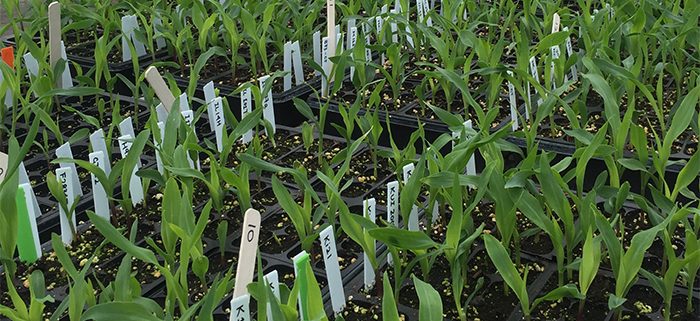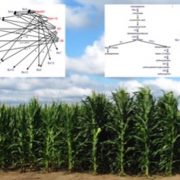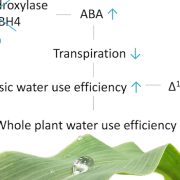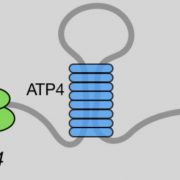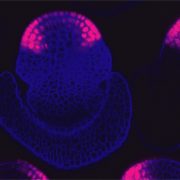Metabolite to Gene: A High-Resolution Resource for Maize
Zhou et al. provide a resource for structural and functional assignment of the many unknown maize metabolites. Plant Cell https://doi.org/10.1105/tpc.18.00772
Background: Plants defend themselves against herbivores and pathogens by producing a myriad of specialized metabolites. This physiological process is encoded by biosynthetic and regulatory genes that are positioned throughout the plant genome. In staple crop species like maize (Zea mays), understanding how these metabolites are synthesized, regulated, and distributed across diverse cultivars will facilitate the development of novel pest-resistant cultivars and hence promote yield in stressful environments.
Question: The production of individual specialized metabolites has previously been associated with specific loci in the maize genome. In this study, we aimed to provide a metabolome-scale association resource that includes thousands of both known and as yet uncharacterized maize metabolites. We achieved this goal by measuring metabolite abundance in the seedling leaf tips and bases from more than 220 genetically diverse maize cultivars.
Findings: We established a high-resolution resource for associating maize metabolite abundance with genetic loci, validated the quality of these associations with known metabolites and their biosynthetic genes, and demonstrated the utility of this resource by discovering a likely biosynthetic gene for a relatively uninvestigated class of maize metabolites. Furthermore, by compiling associations between metabolites and genetic elements, we identified hotspots in the maize genome that have disproportional impacts on numerous metabolites and demonstrated that metabolites associated with shared genetic elements tend to be similar in their chemical structures. Finally, we demonstrated that both tissue type (leaf tips vs. bases) and maize population structure have a significant impact on the abundance of specialized metabolites.
Next steps: Our high-resolution metabolite mapping resource leads to testable hypotheses about the association of genetic elements with metabolite abundance. For each specific metabolite, further functional validation studies, such as experiments with genetic knockouts, are required to demonstrate the causal relationships between metabolite abundance and specific loci in the maize genome.
Shaoqun Zhou, Karl A. Kremling, Nonoy Bandillo, Annett Richter, Ying K. Zhang, Kevin R. Ahern, Alexander B. Artyukhin, Joshua X. Hui, Gordon C. Younkin, Frank C. Schroeder, Edward S. Buckler, and Georg Jander (2019). Metabolome-scale Genome-wide Association Studies Reveal Chemical Diversity and Genetic Control of Maize Specialized Metabolites. Plant Cell 31: xxx; DOI: https://doi.org/10.1105/tpc.18.00772
Key words: Specialized metabolites, metabolite profiling, maize, genome-wide association studies


